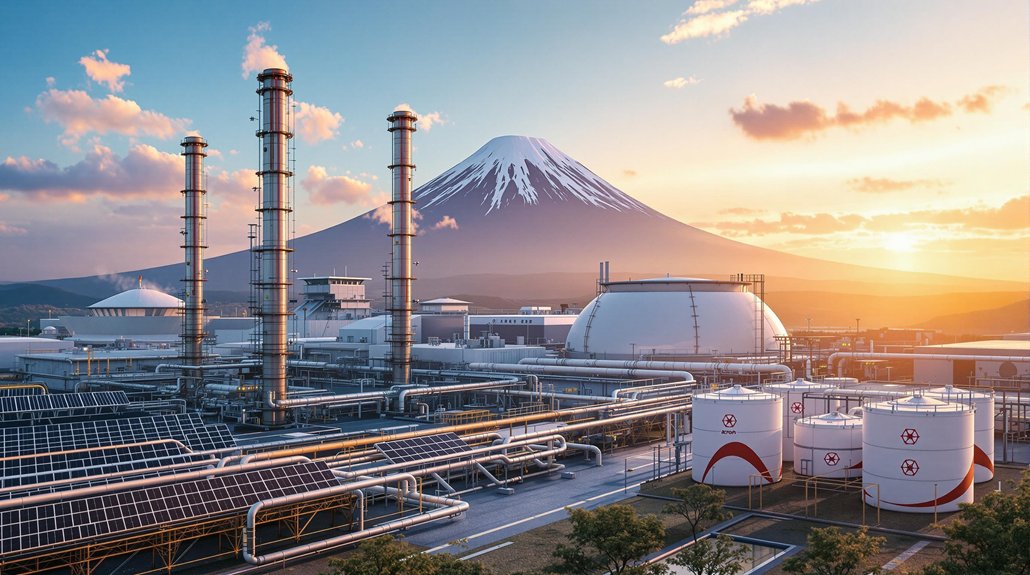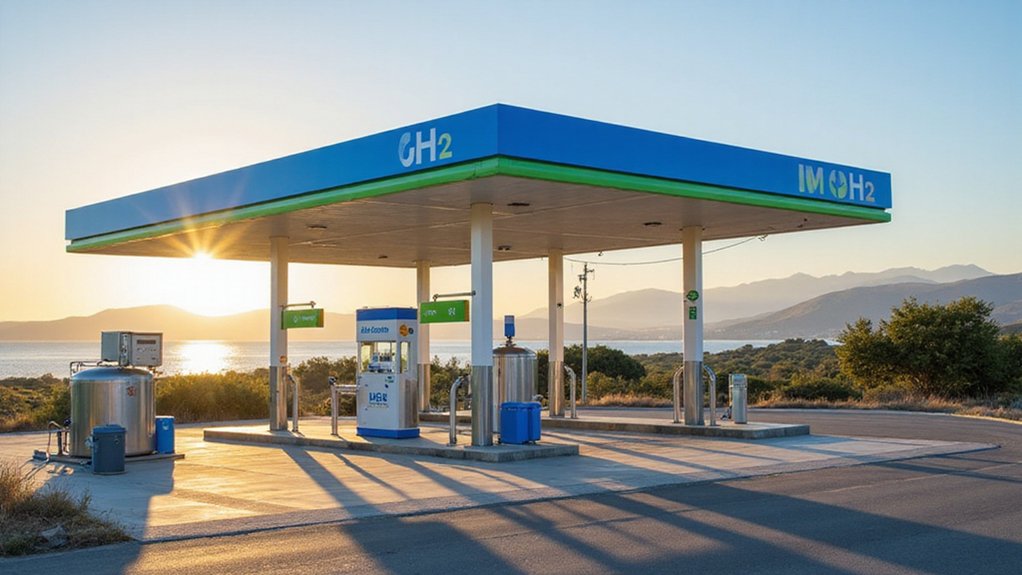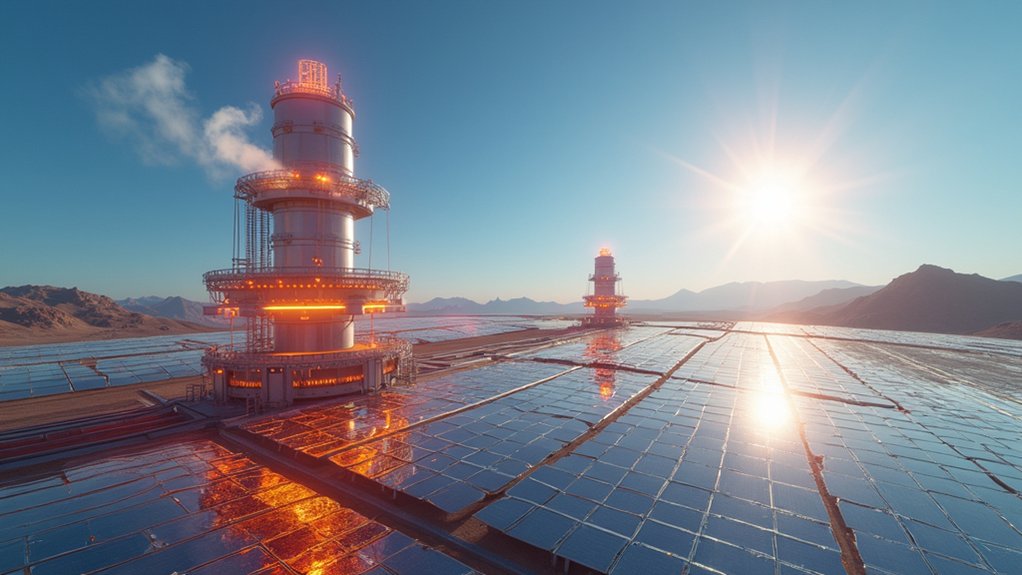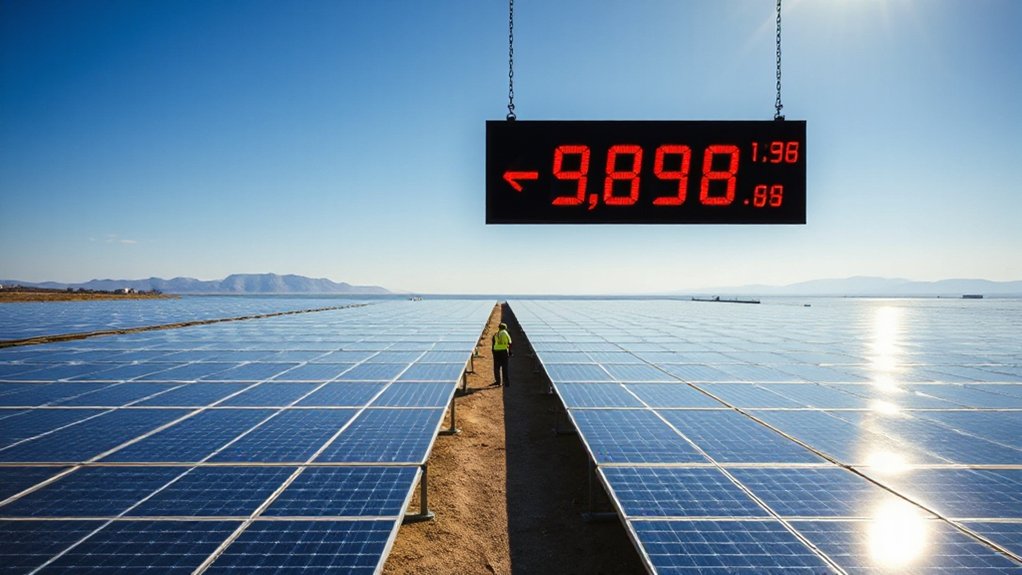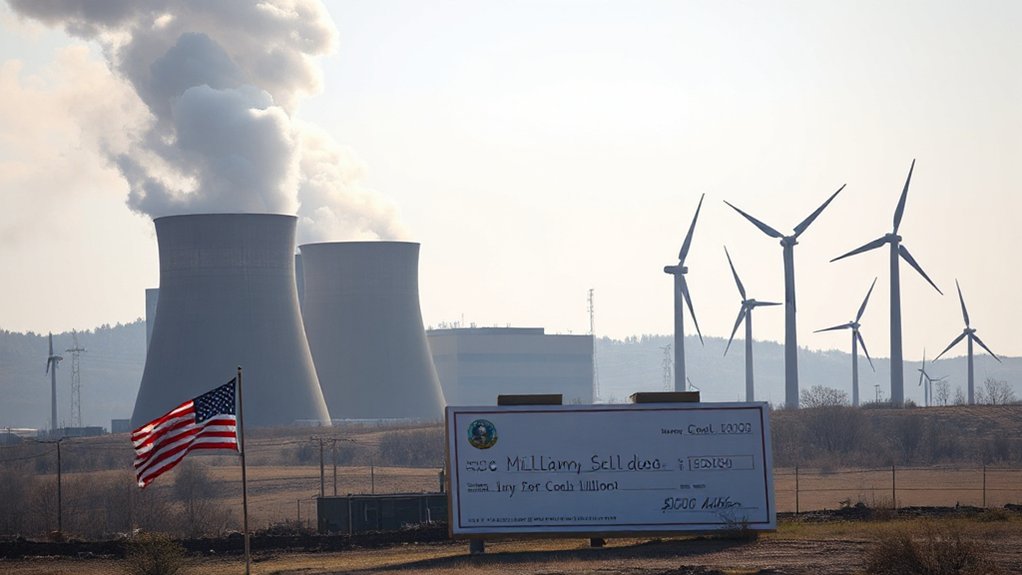Japan’s nuclear-powered hydrogen ambitions are no joke. Since 2017, their strategy has targeted energy independence through hydrogen production, with nuclear reactors doing the heavy lifting. They’ve already demonstrated impressive hydrogen generation rates in labs while accumulating 24% of global hydrogen patents. If successful, Japan could flip the script on traditional energy superpowers—transforming from resource-poor importer to hydrogen economy leader. The global energy chessboard might never look the same.
While many nations dabble in renewable energy, Japan is going all-in on hydrogen—and using nuclear power to make it happen. The resource-poor island nation isn’t messing around. Since 2017, their Basic Hydrogen Strategy has positioned hydrogen as their ticket to energy independence. And honestly? They might be onto something big.
Japan’s patent game is strong—owning 24% of global hydrogen-related patents from 2011 to 2020. Nobody else comes close. Their companies aren’t just filing paperwork; they’re building actual stuff. Nippon Steel already cut CO2 emissions by a record 33% using hydrogen in steelmaking. That’s not a pilot project. That’s reality.
Japan isn’t just talking hydrogen—they’re building it. Patents to production plants, theory to reality.
The secret sauce? Nuclear power. Japan’s Atomic Energy Agency established a dedicated research center for high-temperature hydrogen production. Their scientists have already demonstrated hydrogen generation at 30 liters per hour in labs, with pilot plants hitting 30 cubic meters hourly. These next-generation reactors are designed to operate at high temperatures for efficiency while maintaining strict safety protocols. This approach delivers the 24/7 reliability that weather-dependent renewables cannot match.
Next step: a massive 2-ton daily production facility integrated with their High Temperature Engineering Test Reactor. Ambitious? Yes. Impossible? Nope.
Nuclear-powered hydrogen solves Japan’s biggest problem—geography. No oil, no gas, barely any coal. But with this tech, they can finally tell energy-exporting giants to take a hike. The shift toward hydrogen intensified after the 2011 earthquake dramatically changed public opinion against nuclear energy. The target is crystal clear: hydrogen below $3/kg by 2030. At that price, the economics change for everything from steel mills to power plants.
This isn’t just about climate goals, though Japan certainly frames it that way. It’s about breaking dependency. It’s about economic survival. For a nation sitting on virtually zero fossil fuels, hydrogen represents liberation.
Will it work? The patents, investments, and industrial applications suggest Japan isn’t bluffing. If their nuclear-hydrogen gambit pays off, today’s energy superpowers might find themselves with a lot less leverage.
And Japan? They’ll be too busy leading the hydrogen economy to care.
References
- https://www.ecoticias.com/en/nuclear-energy-japan-hydrogen/6246/
- https://www.renewableenergyworld.com/energy-storage/bullet-train-thinking-how-japan-hopes-to-lead-a-global-hydrogen-revolution/
- https://www.weforum.org/stories/2024/04/hydrogen-japan/
- https://world-nuclear.org/information-library/energy-and-the-environment/hydrogen-production-and-uses
- https://origins.osu.edu/article/energy-bright-tomorrow-rise-nuclear-power-japan
